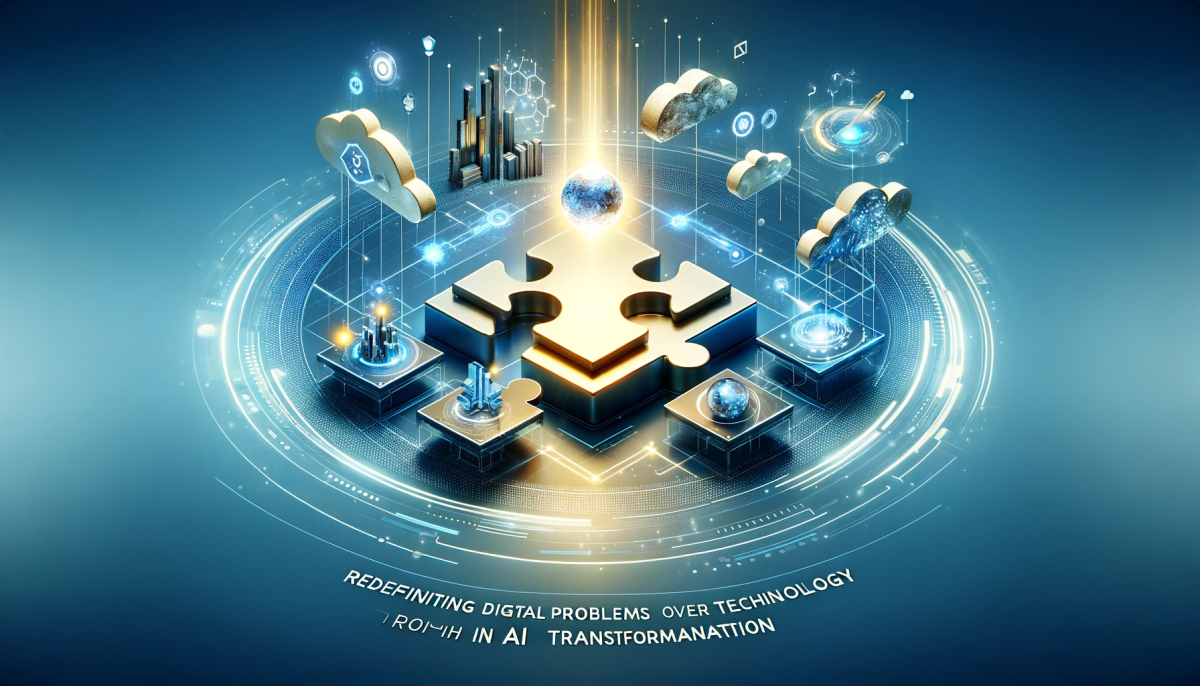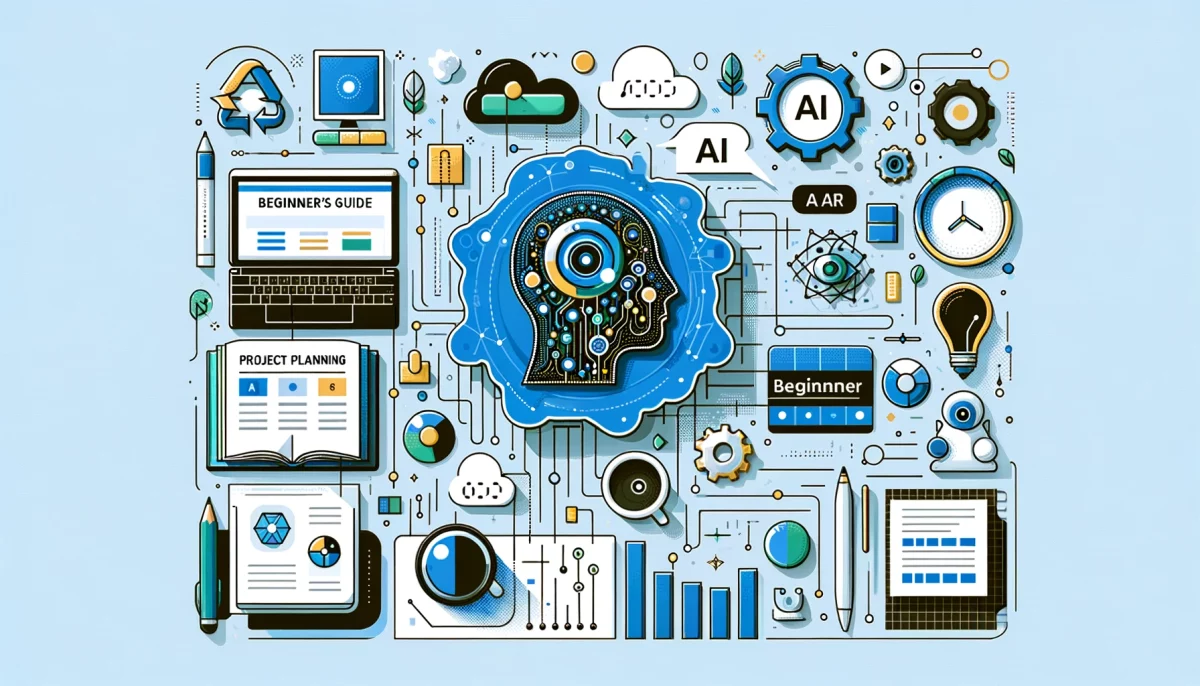Why do so many promising digital and AI initiatives seem to lose their way, never fully realizing their intended impact? This probing question underpins our inquiry into a widespread yet often overlooked issue: the technology-first mindset in digital and AI transformations. In today’s business landscape, captivated by the allure of the newest technological breakthroughs, the real challenge is frequently misunderstood. It is not merely about acquiring the most advanced tools; rather, it’s about deeply comprehending the fundamental problems these tools are designed to solve.
This article advocates for a fundamental reorientation – a shift in perspective that places the emphasis on problems rather than technology. It suggests that for solutions to be not just groundbreaking but also pertinent, enduring, and transformative, there must be a concerted effort to prioritize understanding and addressing core issues over the allure of technology. This is not just a shift in strategy, but a shift in mindset, one that could redefine the trajectory of digital and AI endeavors, steering them towards more meaningful and sustainable success.
Understanding the Issue
Why do so many organizations start their digital and AI journeys by fixating on technology? The allure of new, cutting-edge solutions is hard to resist. However, this technology-first mindset often leads to misalignment with actual business needs and problems. When organizations leap towards solutions without thoroughly understanding the problems, they risk investing in technologies that are either redundant or ill-suited. This mismatch not only results in wasted resources but also missed opportunities for truly transformative change. By shifting focus from technology to the underlying problems, organizations can ensure that their digital and AI initiatives are more than just technological showcases – they become integral, solution-focused tools driving real value and progress.
Strategic Vision and Alignment with Goals
In the context of digital and AI transformations, a strategic vision serves as a compass, guiding organizations towards meaningful and impactful use of technology. This vision should stem from a deep understanding of the organization’s long-term goals and the problems it aims to solve. Aligning technology initiatives with this strategic vision ensures that every digital tool, application, or AI solution is not just a standalone innovation but a cog in a larger machine driving towards the organization’s objectives. This alignment demands a careful assessment of how technology can specifically address the identified problems, enhance operational efficiency, and contribute to overall strategic goals.
Stakeholder Involvement and Needs Analysis
A critical aspect of navigating digital and AI transformations is the involvement of stakeholders. From employees and customers to partners and suppliers, each group offers unique insights that can shape more effective and user-centric solutions. Engaging these stakeholders through surveys, interviews, and workshops helps in understanding their actual needs, expectations, and potential resistance. This collaborative approach ensures that the technology adopted is not only top-of-the-line but also resonates with and fulfills the requirements of those who use it. By prioritizing stakeholder needs analysis, organizations can tailor their digital strategies to offer real solutions to real problems, enhancing acceptance and effectiveness.
Assessing Current State and Future Trends
In the journey of digital and AI transformations, a thorough assessment of the current technological state and an eye towards future trends are essential. Understanding where an organization currently stands in terms of technology – its capabilities, limitations, and gaps – forms the foundation for any transformation. Simultaneously, anticipating future trends in digital and AI technologies enables organizations to stay ahead of the curve. This dual focus helps in crafting strategies that are not just reactive to today’s challenges but also proactive in preparing for tomorrow’s opportunities. By aligning technological adoption with both current needs and future projections, organizations can create a resilient, forward-thinking digital strategy.
Setting Realistic Objectives
In the realm of digital and AI transformations, setting realistic, achievable objectives is vital. These objectives should be specific, measurable, achievable, relevant, and time-bound (SMART). Aligning these objectives with the identified problems ensures that every technological initiative has a clear purpose and contributes meaningfully to solving real issues. It’s not just about leveraging technology for its own sake but using it as a tool to achieve well-defined goals. This approach minimizes the risk of veering off course and maximizes the impact of technological investments.
Integrating Solutions into Business Models
The integration of digital and AI solutions into existing business models is a complex yet crucial step. This process goes beyond mere implementation; it requires a strategic alignment of technology with business operations, goals, and culture. Ensuring that every technological tool and application is woven into the fabric of the business model guarantees that these solutions contribute effectively to operational efficiency, customer satisfaction, and competitive advantage. The key is to create a seamless blend where technology enhances processes without disrupting the core values and functioning of the organization.
Organizational Culture and Change Management
Adapting to digital and AI transformations demands not just technological upgrades but also a shift in organizational culture and effective change management. A culture that is agile, innovative, and open to change is crucial for the successful adoption of new technologies. Change management plays a pivotal role in this transition, addressing potential resistance and ensuring a smooth integration of new systems and processes. Effective strategies include clear communication, training programs, and involving employees in the transformation journey, fostering a sense of ownership and easing the transition.
Communication and Progress Measurement
Effective communication and regular progress measurement are essential in guiding and assessing digital and AI transformations. Clear, consistent communication across all levels ensures that everyone understands the vision, objectives, and their roles in this transformation. Employing diverse communication methods, such as town halls, newsletters, and team meetings, enhances engagement and feedback. Progress measurement, through key performance indicators (KPIs) aligned with transformation goals, is crucial for tracking advancements, identifying areas needing improvement, and maintaining momentum. This combination of strategic communication and rigorous progress tracking is key to realizing the full potential of digital and AI initiatives.
Navigating AI and Digital Shifts
In conclusion, the journey of digital and AI transformations is more than a mere technological upgrade; it’s a strategic, problem-centric endeavor. Starting with a clear understanding of the underlying problems, aligning technology with organizational goals, involving stakeholders, and setting realistic objectives are fundamental steps. Effective integration into business models, adaptable organizational culture, and robust change management further facilitate this transition. Clear communication and systematic progress measurement are essential to track and steer this journey. Ultimately, it’s the focus on problems, not just technology, that transforms digital and AI initiatives from mere innovations into key drivers of long-term, sustainable success.









